Overview
The article titled "10 Key Insights from the Direct to Consumer Wine Symposium" presents essential strategies and insights that emerged from the symposium, aimed at enhancing direct-to-consumer (DTC) sales for wineries. It underscores the significance of:
- Digital transformation
- Personalized customer experiences
- Data-driven decision-making
- Effective storytelling
These elements are pivotal for wineries to cultivate customer loyalty and achieve sustainable growth in a competitive market. By embracing these insights, wineries can position themselves for success in an evolving landscape, ensuring they meet the demands of today's discerning consumers.
Introduction
The wine industry is experiencing a significant transformation as family-owned wineries increasingly adopt direct-to-consumer (DTC) strategies to forge meaningful connections with their audience. By harnessing innovative marketing techniques—such as personalized storytelling and data-driven decision-making—these vineyards are positioned to enhance customer engagement and stimulate sales growth. Yet, as competition intensifies and consumer preferences shift, the pressing question arises: how can wineries effectively navigate this intricate landscape to secure sustainable success? This article explores key insights from the recent Direct to Consumer Wine Symposium, providing a strategic roadmap for wineries aiming to refine their approaches and thrive in the digital age.
Enocap: Transformative DTC Strategies for Family-Owned Wineries
Enocap stands out as a leader in cultivating robust direct-to-consumer (DTC) sales channels, empowering family-owned vineyards to forge meaningful connections with their clientele. By emphasizing personalized marketing and harnessing the power of data analytics, wine industry businesses can realize significant sales growth and cultivate brand loyalty. Enocap's tailored strategies encompass optimizing online presence, enhancing customer experiences, and executing targeted promotions that effectively drive traffic and conversions.
Take, for instance, the vineyards that have adopted Enocap's methodologies; they have reported extraordinary results, including a staggering 191% increase in online transactions. This remarkable growth is primarily linked to the adept application of personalized marketing techniques that resonate with consumers, thereby encouraging repeat purchases. Furthermore, data analytics plays an indispensable role in deciphering consumer preferences, enabling vineyards to refine their offerings and marketing strategies in response.
The importance of customized marketing within the beverage sector is paramount. With 27% of originating from digital channels, producers engaging in personalized outreach are strategically positioned to capture the attention of prospective customers. Enocap's approach not only enhances immediate sales but also nurtures long-term customer loyalty, establishing it as an essential strategy for family-owned businesses striving to thrive in a competitive marketplace.
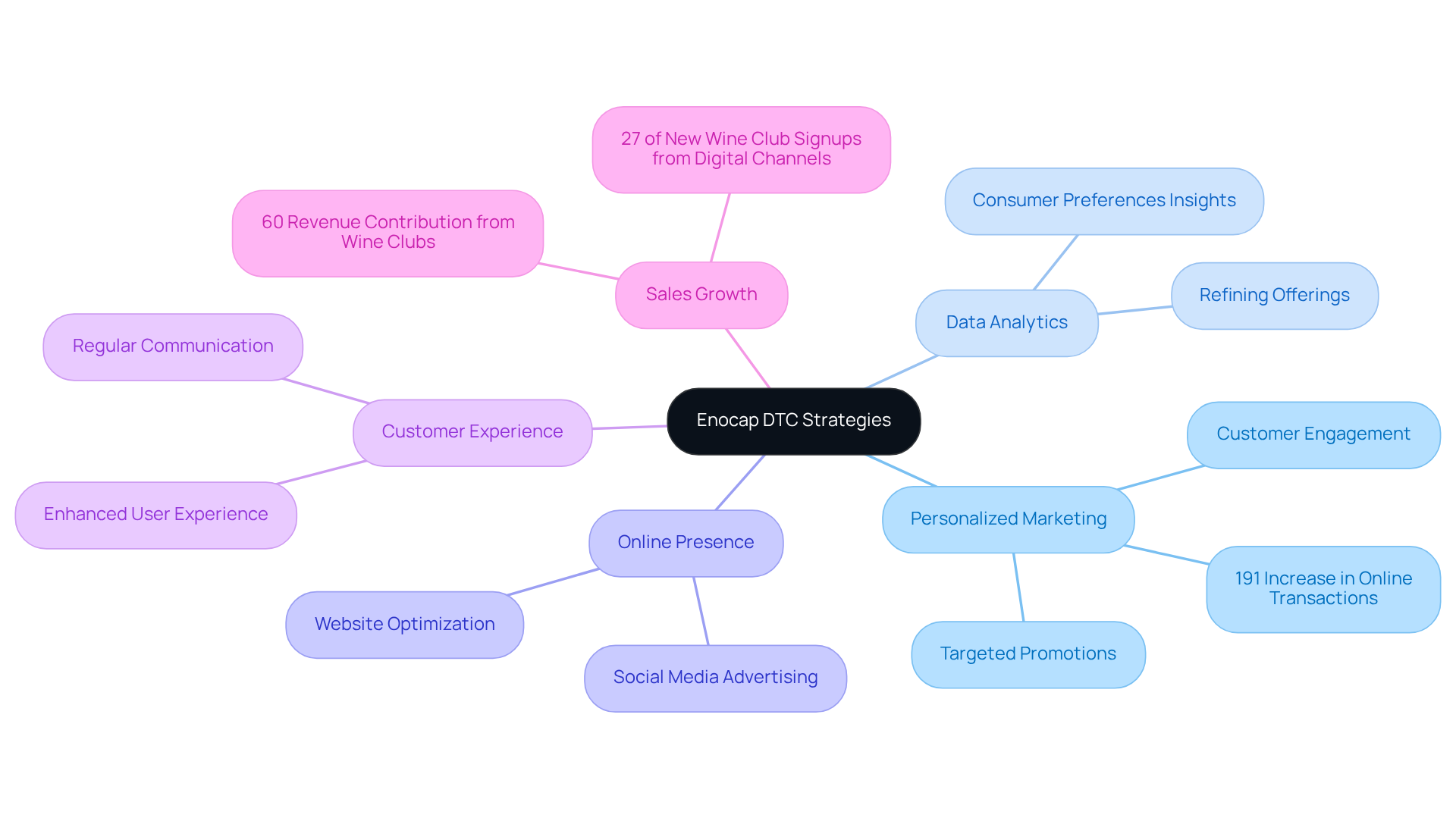
The Power of Brand Storytelling in Direct-to-Consumer Wine Sales
Effective brand storytelling empowers vineyards to articulate their unique heritage, values, and production processes, forging a robust emotional connection with consumers. By crafting compelling narratives that resonate with their target audience, vineyards can significantly enhance customer loyalty and generate consistent revenue by participating in the [direct to consumer wine symposium](https://enocap.com). Research reveals that consumers are 5% more inclined to select wines featuring engaging winemaker stories and are willing to pay 6% more for such bottles. This narrative-driven strategy not only boosts immediate sales but also cultivates repeat purchases and encourages vital word-of-mouth referrals, essential for long-term success in a competitive market.
Expert opinions underscore the importance of incorporating personal and authentic elements into vineyard narratives. Establishments that reflect on their distinctive traits—such as unique winemaking techniques, architectural styles, or local legends—can foster a more relatable and memorable brand identity. Engaging storytelling can also be customized to appeal to diverse demographics; younger consumers often prioritize sustainability and innovation, while older audiences may appreciate tradition and craftsmanship.
Furthermore, the digital landscape presents vineyards with an opportunity to amplify their stories across various channels, including social media and email marketing. Employing multimedia elements like videos and virtual tours can further enliven these narratives, rendering them more engaging and accessible. As vineyards embrace storytelling as a core marketing strategy, they not only distinguish themselves from competitors but also cultivate a devoted clientele that shares their passion for wine, particularly highlighted at the direct to consumer wine symposium. Involving the vineyard team in the narrative-sharing process is crucial for consistency, ensuring that every interaction reflects the establishment's unique story. Additionally, strategic capital planning can bolster these storytelling initiatives, enabling family-owned vineyards to flourish for generations. To transform casual purchasers into dedicated club members, vineyards should implement that highlight unique advantages, tailored experiences, and community involvement, thereby nurturing a stronger connection with their audience.
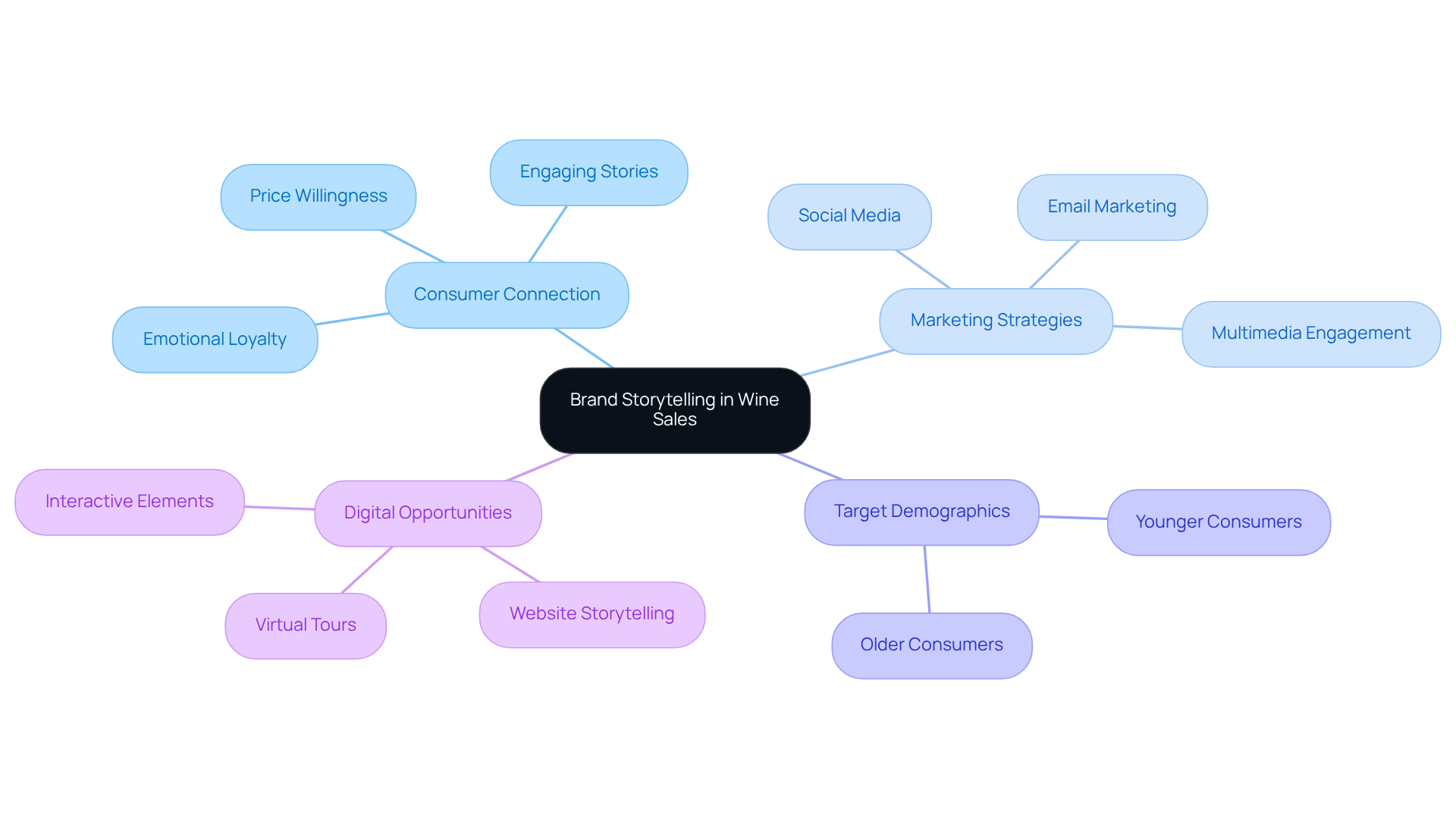
Effective Customer Retention Techniques for Wine Clubs
To effectively retain members in wine clubs, wine producers must prioritize:
- Personalized communication
- Exclusive benefits for members
- Engaging events
Methods such as frequent feedback questionnaires and customized proposals can significantly enhance the client experience. Notably, establishments that prioritize member experience over operational convenience have observed retention enhancements of 18-24% within the first year. Furthermore, loyalty rewards and unique experiences—such as early access to limited releases and complimentary tastings—foster a sense of belonging and appreciation among members.
Research indicates that increasing client retention rates by just 5% can boost profits by 25% to 95%, underscoring the financial impact of effective retention strategies. Personalized outreach, particularly for at-risk members, can re-engage those displaying signs of disengagement, while exclusive benefits provide compelling reasons for members to remain loyal. By making members feel appreciated and connected, establishments can significantly lower churn rates and enhance lifetime customer value, ultimately leading to a more sustainable and profitable wine club.
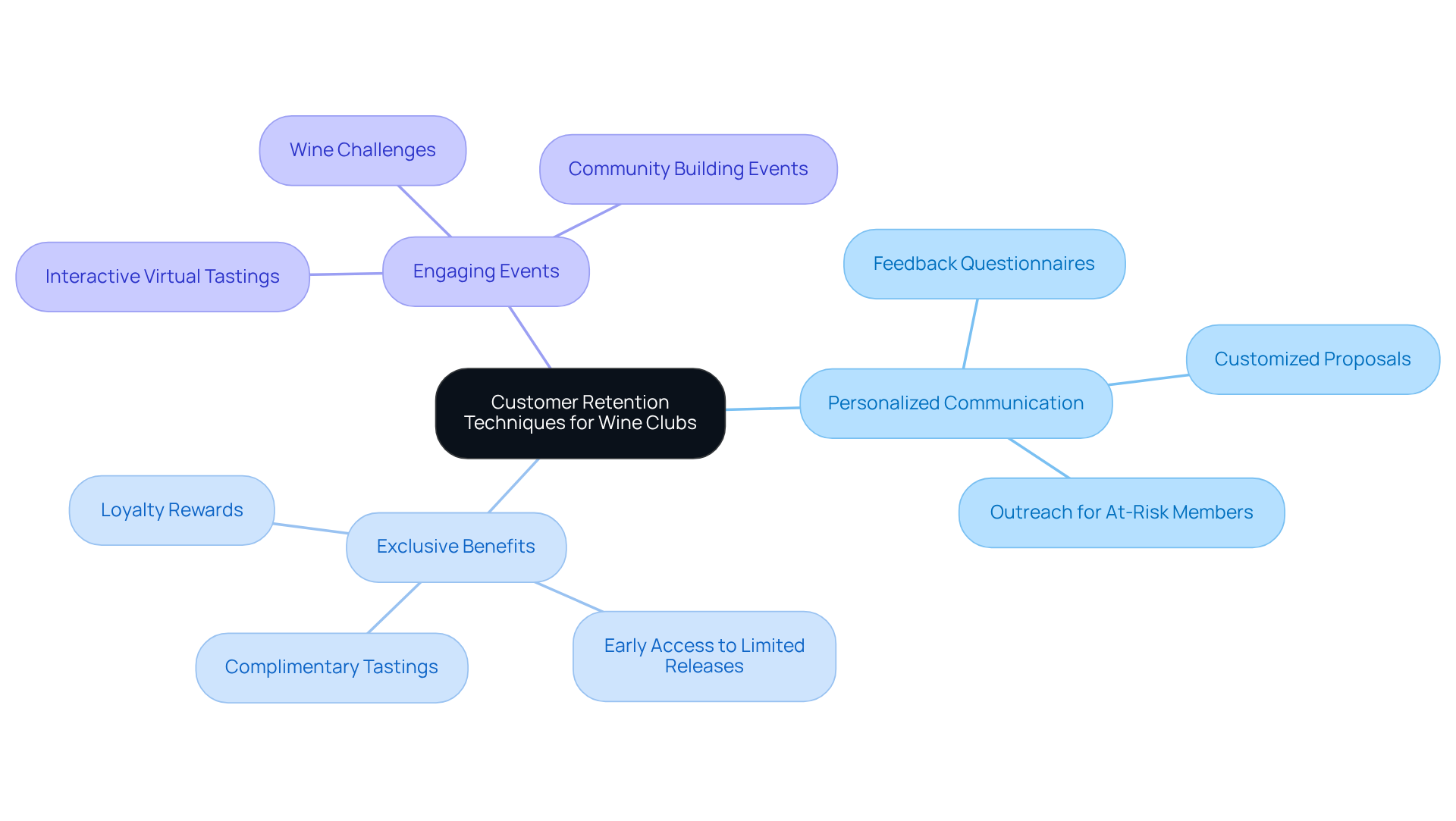
Strategic Capital Planning for Sustainable Growth in Wineries
Strategic capital planning is vital for vineyards seeking sustainable growth. This process necessitates a comprehensive evaluation of funding requirements and an exploration of diverse financing options, including:
- Debt financing
- Equity investments
- Partnerships
For family-owned vineyards, grasping the financing landscape is paramount; interest rates for agricultural loans typically range from 1.5% to 5%, whereas term loans can vary from 4.5% to 10%. Additionally, Small Business Administration (SBA) loans generally fall between 5% and 9%, and lines of credit can range from 4.5% to 12%.
Wineries that establish a clear can confidently pursue growth opportunities while effectively managing associated risks. Numerous successful examples exist, with many vineyards securing funding through equity investments, which not only provide essential capital but also cultivate valuable partnerships. As the beverage industry increasingly prioritizes sustainable practices, financing options that support eco-friendly initiatives are becoming increasingly attractive to investors.
Bud Cuchet, a seasoned expert in the fine wine sector, underscores the importance of strategic financing, asserting that a well-structured approach to capital can significantly bolster a vineyard's growth potential. By aligning financial resources with long-term objectives, wine producers can adeptly navigate market complexities and position themselves for enduring success.
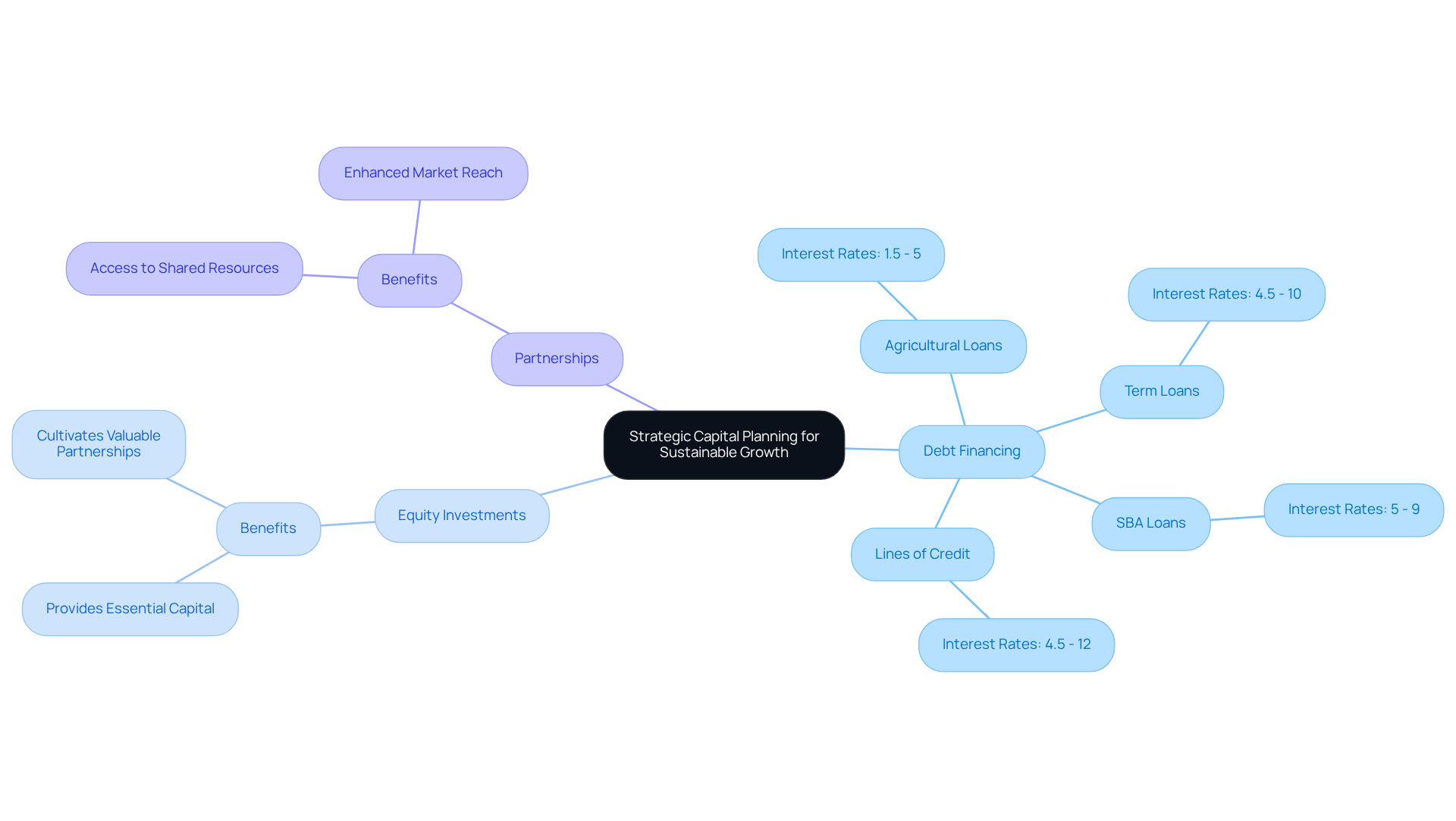
Optimizing E-Commerce Channels for Increased Wine Sales
To enhance [e-commerce channels](https://enocap.com), wineries must prioritize user-friendly website design, as it significantly impacts online sales. A smooth checkout procedure and clear, engaging product descriptions are crucial for converting visitors into buyers. Studies demonstrate that a streamlined user experience can lead to higher conversion rates; effective navigation and intuitive layouts are essential for maintaining user interest.
Implementing robust SEO strategies is vital for increasing visibility in a competitive market. Wineries should concentrate on and content that resonate with their target audience. Furthermore, utilizing social media for promotions and captivating narratives can attract new clients and cultivate brand loyalty.
Offering incentives such as free shipping or exclusive discounts can further drive traffic and conversions. Routine evaluation of website performance and client behavior allows vineyards to implement data-informed enhancements, ensuring that their online presence evolves alongside consumer expectations. For instance, establishments that have invested in contemporary web design have reported significant increases in online sales, underscoring the direct correlation between user experience and revenue growth.
Incorporating best practices, such as displaying a variety of beverages on the homepage and maintaining clear communication about shipping policies, can enhance customer satisfaction and trust. As the online beverage market continues to expand, focusing on these elements will be crucial for wineries aiming to thrive in the digital landscape.
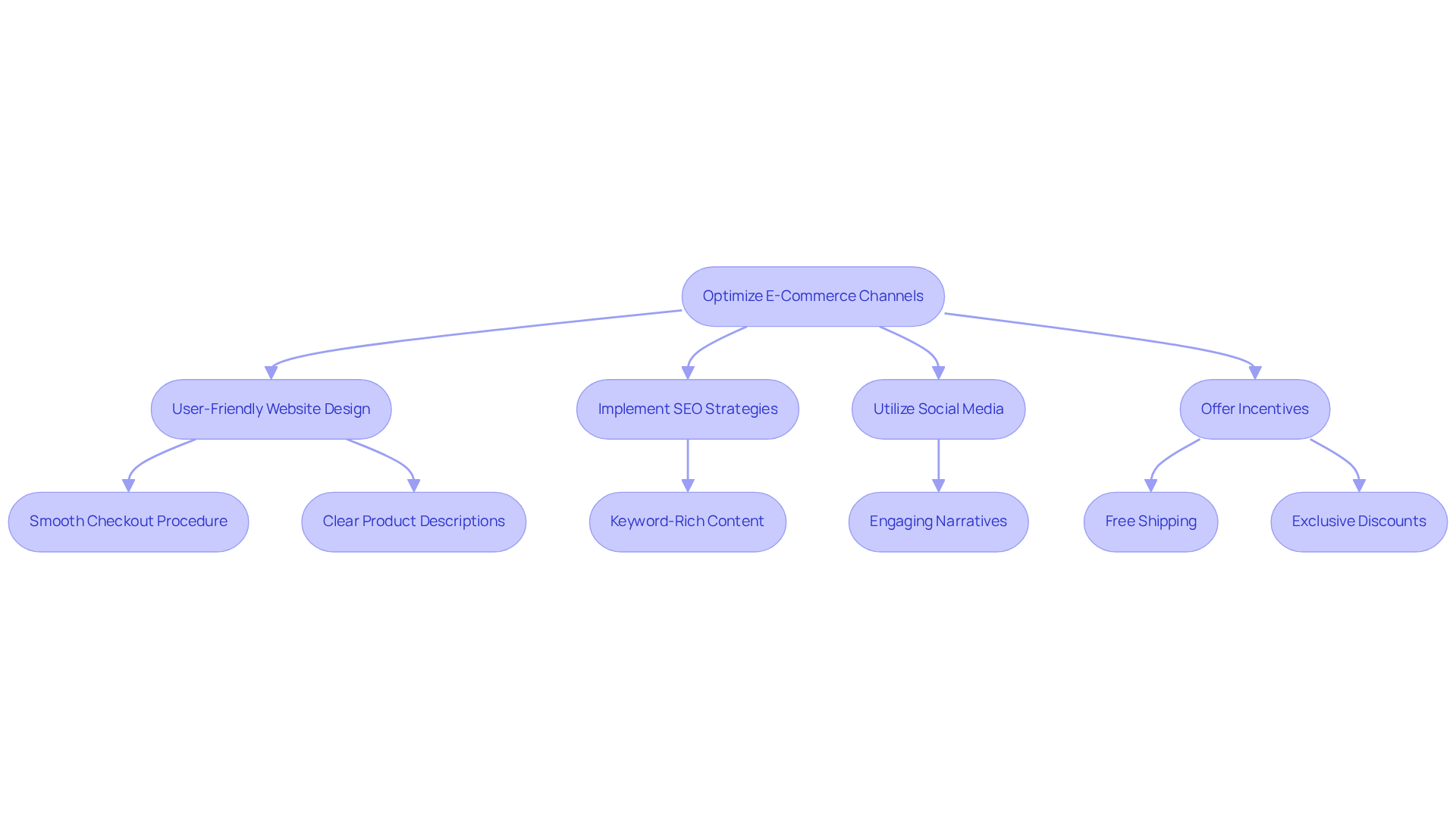
Trends in Online Wine Buying: Insights from Recent Market Data
Recent market data reveals a substantial surge in online beverage purchases, with consumers increasingly favoring digital channels for their selections. Notably, subscription services have gained traction, driven by a desire for convenience and personalized experiences. Subscription-based beverage delivery services are reshaping consumer habits, with a significant portion of buyers seeking tailored recommendations that align with their tastes and preferences.
Moreover, there is a notable shift towards sustainable and organic beverages, reflecting an increasing consumer awareness about health and environmental effects. Wineries that adapt to these preferences by offering organic options and emphasizing can significantly enhance their appeal to this eco-aware demographic. Establishments that have incorporated sustainable practices into their operations have reported heightened loyalty and engagement from patrons.
To capitalize on these trends, vineyards must refine their marketing strategies to highlight subscription offerings and sustainable practices, ensuring they resonate with the evolving preferences of today’s beverage consumers. By doing so, they can not only increase sales but also nurture long-term connections with their clients.
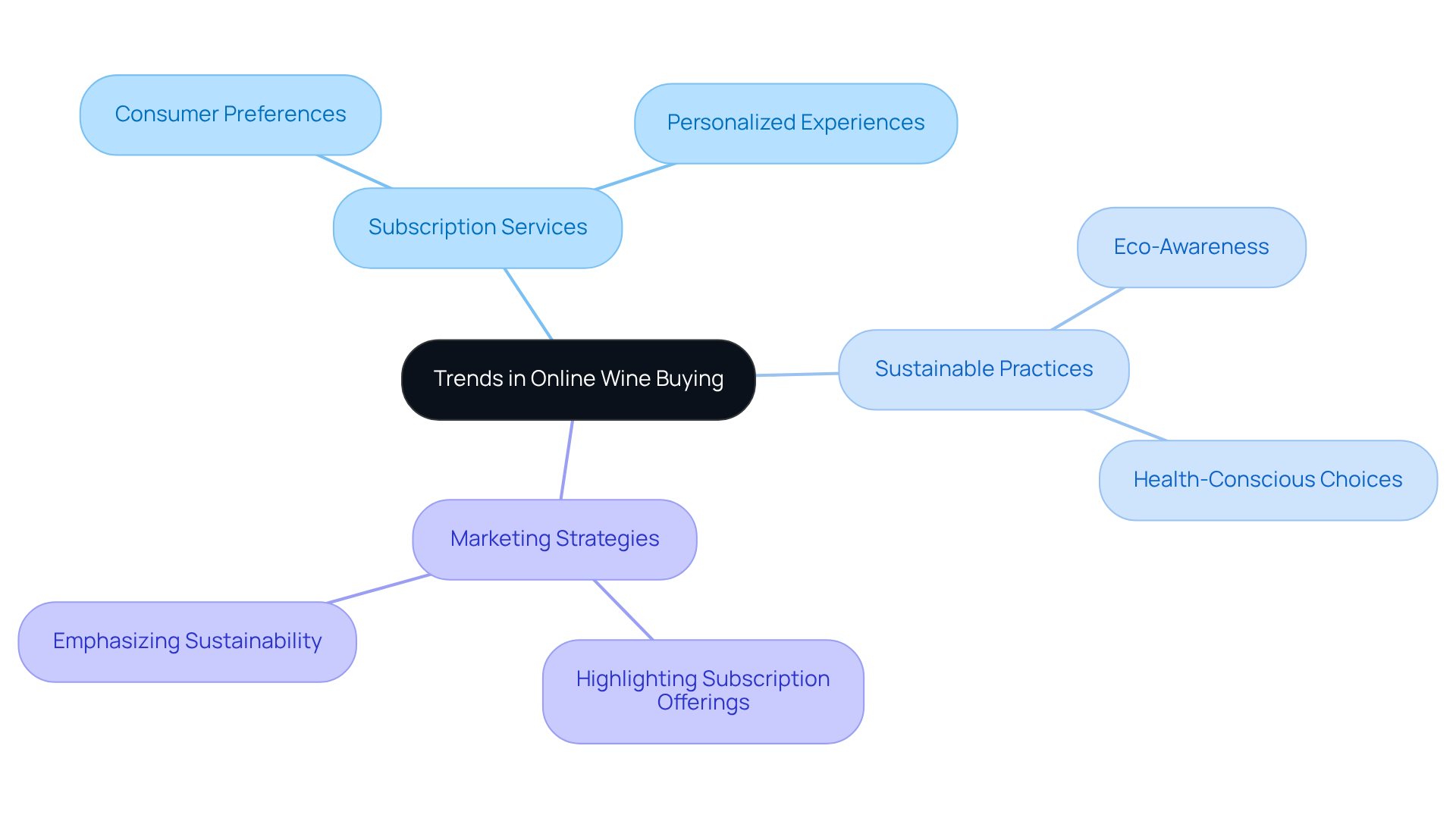
Implementing Effective Demand Generation Techniques for Wineries
Wineries can significantly enhance demand generation by leveraging the power of , social media campaigns, and targeted advertising. Captivating content that educates consumers about wine varieties, food pairings, and upcoming vineyard events not only attracts potential clients but also fosters a deeper connection with the brand. Establishments that prioritize storytelling and authentic messaging have reported notable increases in customer engagement and loyalty.
Furthermore, collaborating with influencers can amplify reach; over 90% of U.S. companies invest in social media to promote their brands, underscoring its essential role in contemporary marketing strategies. Engaging in wine festivals and community events further boosts visibility, enabling producers to present their offerings directly to enthusiastic audiences.
This multifaceted approach not only stimulates immediate interest but also cultivates long-term relationships with consumers, ultimately leading to increased sales and brand loyalty.
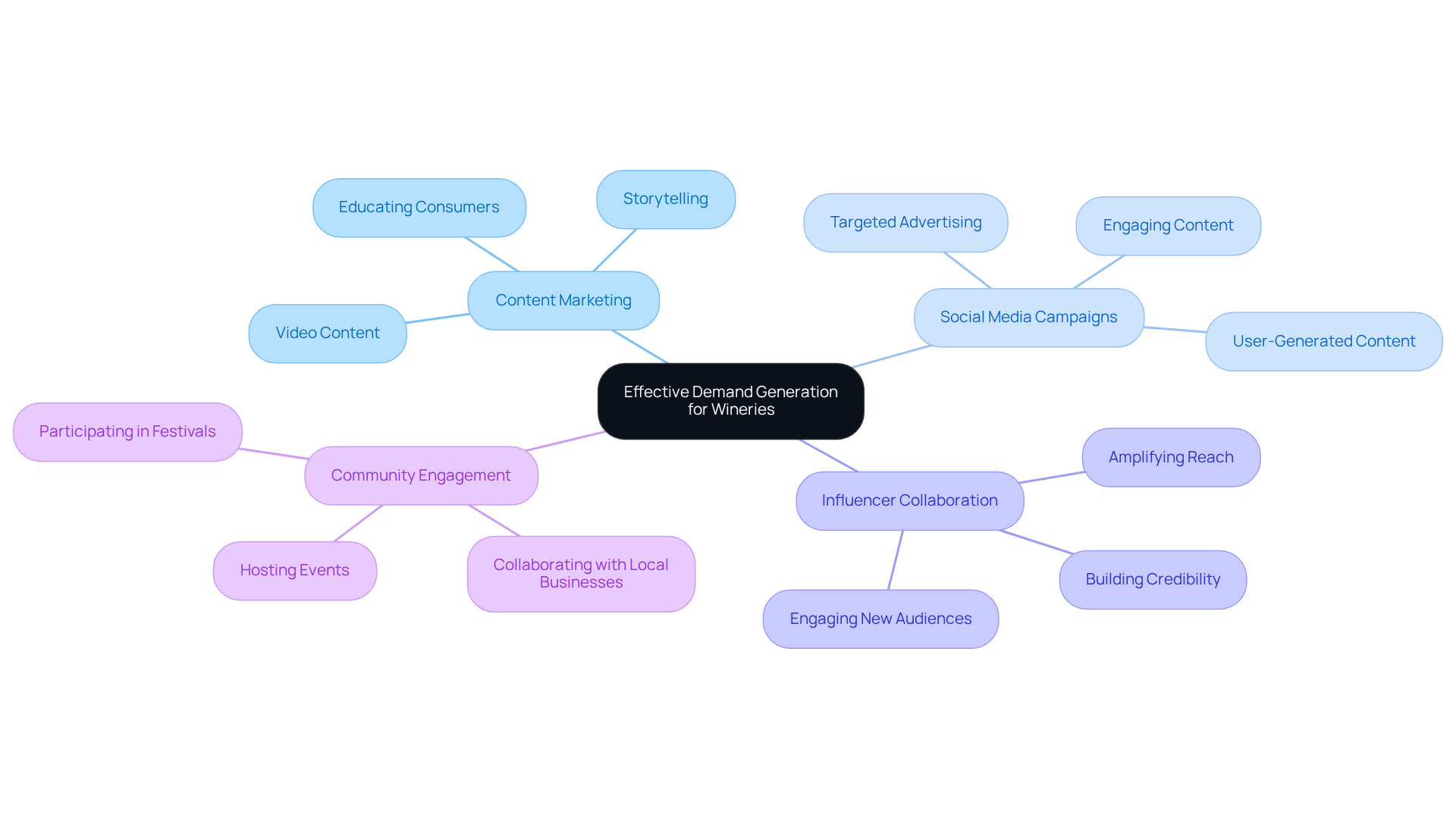
Leveraging Digital Marketing for Enhanced Winery Visibility
To enhance visibility and generate consistent DTC revenue, wine producers must strategically utilize a spectrum of digital marketing channels, including:
- Social media
- Email marketing
- Search engine optimization (SEO)
Engaging content creation, targeted advertising campaigns, and performance analytics are essential for effectively reaching the desired audience. Notably, every dollar spent on email marketing can yield an impressive return of approximately $36, underscoring its potential for driving sales and engagement. Furthermore, social media platforms have become indispensable for vineyards, with 87% of consumers indicating that social media influences their buying choices. By fostering a robust online community through active social media engagement, vineyards can cultivate brand loyalty and transform casual buyers into devoted club members.
Successful examples abound, showcasing vineyards that have amplified their visibility through strategic social media use and effective SEO practices, enabling them to stand out in a crowded marketplace. Additionally, crafting compelling brand narratives can further solidify connections and loyalty. As vineyards adapt to these digital trends, they will not only enhance their market presence but also cultivate enduring relationships with their customers, ensuring sustainable growth for generations.
To further support this growth, vineyards should consider to identify opportunities for debt, equity, or acquisition that align with their long-term goals.
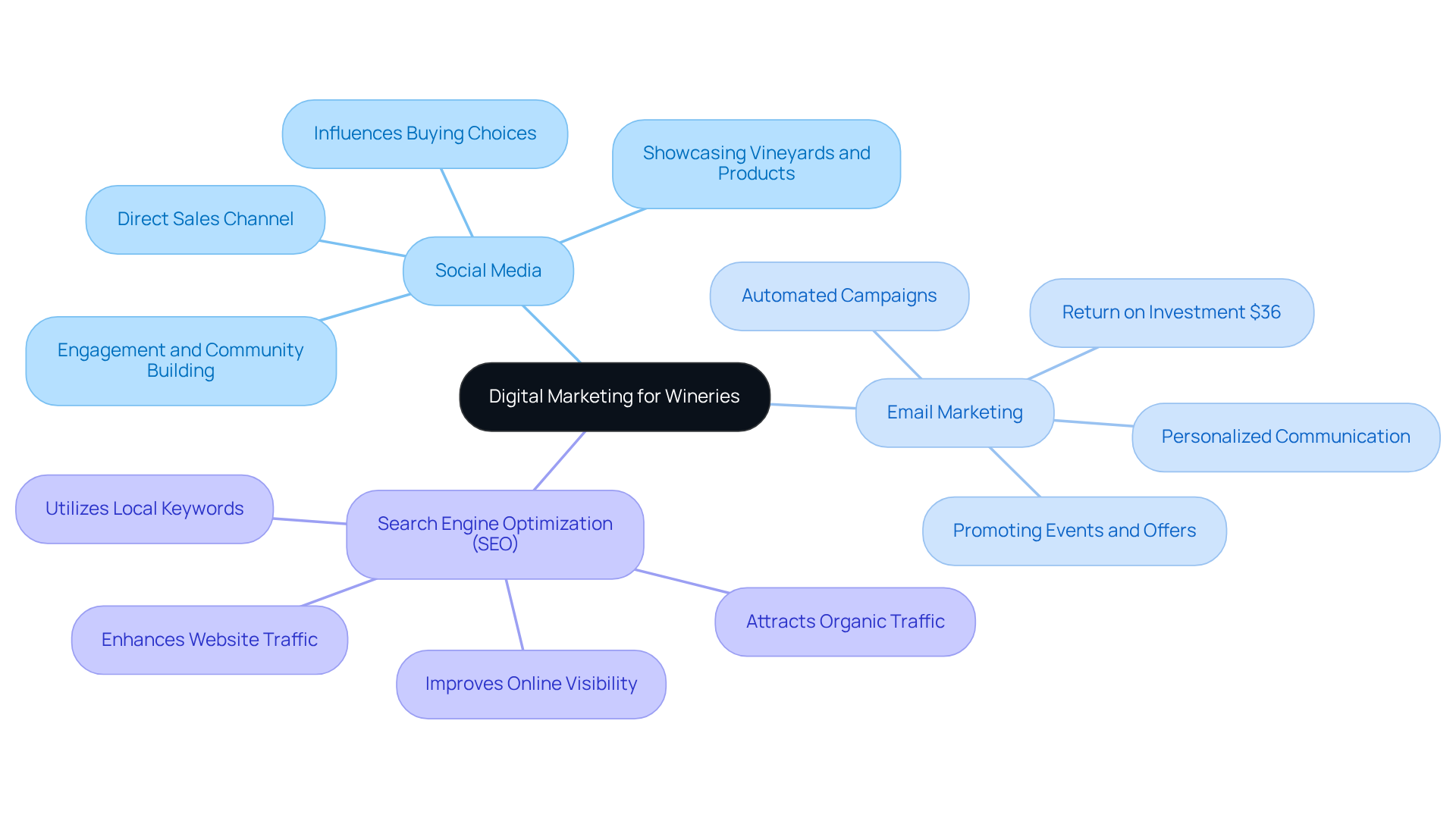
Navigating Cash Flow Challenges in the Wine Industry
Wineries can effectively navigate cash flow challenges by adopting and closely monitoring their expenses. A structured budgeting framework allows wineries to allocate resources efficiently, ensuring that every dollar spent contributes to their operational goals. Establishing clear payment terms with customers and suppliers is crucial; this not only streamlines cash inflows but also fosters stronger relationships with partners.
Furthermore, optimizing inventory management strategies can significantly enhance cash flow. By accurately predicting demand and adjusting inventory levels accordingly, producers can minimize excess stock and reduce holding costs.
Exploring financing options, such as lines of credit or short-term loans, provides essential liquidity during lean periods, enabling businesses to maintain operations without compromising quality. Data suggests that establishments adopting these financial strategies experience better cash flow stability, allowing them to invest in growth opportunities and strengthen their market presence.
As Zane Stevens observes, "To flourish in this constantly evolving environment, vineyards require a sharp awareness of the financial trends that impact their success." This proactive strategy for budgeting and inventory control not only addresses short-term cash flow issues but also prepares businesses for long-term sustainability and growth.
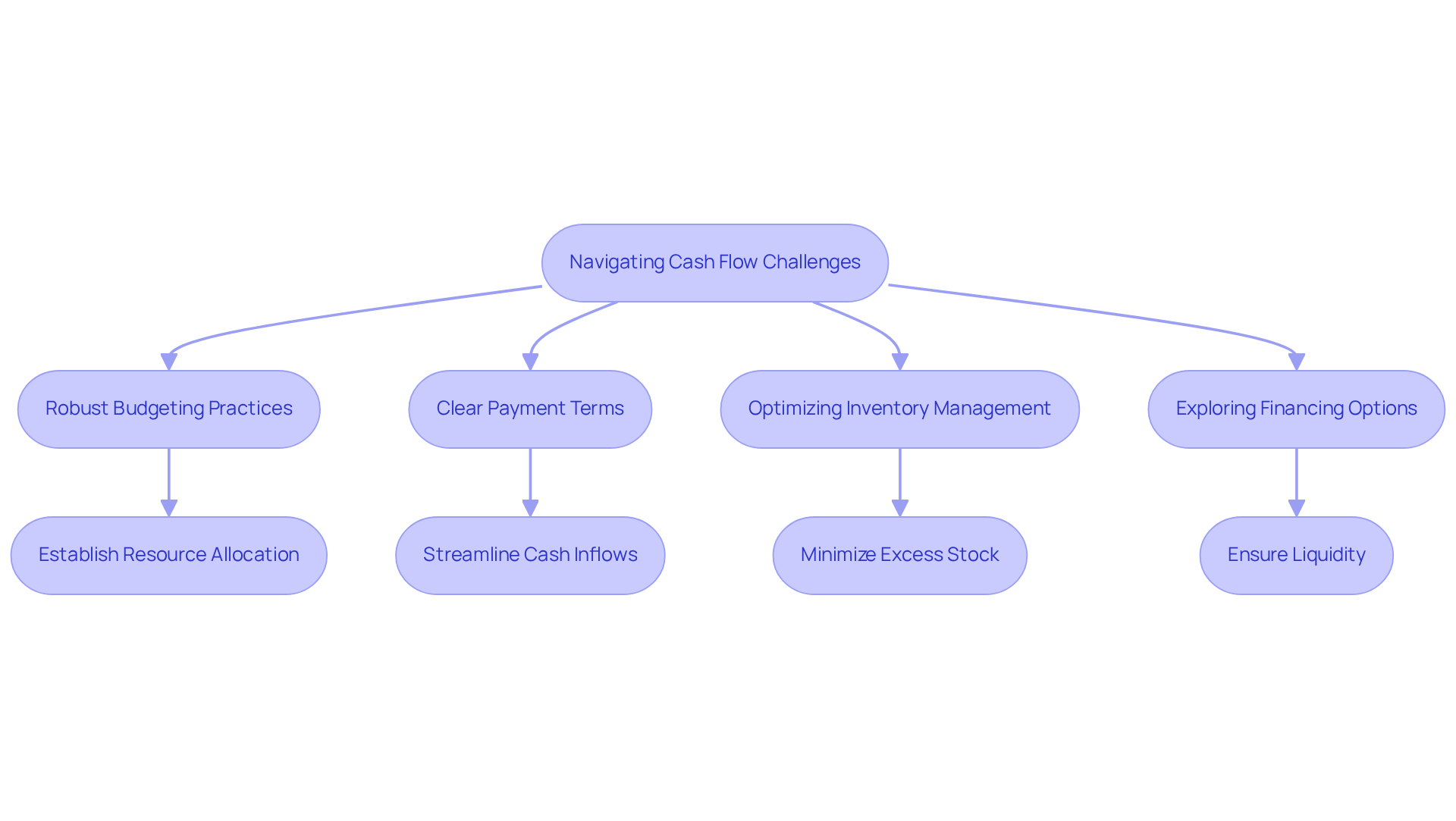
Key Takeaways from the Direct to Consumer Wine Symposium
The direct to consumer wine symposium highlighted the crucial need for digital transformation among wine producers, emphasizing its essential role in improving client engagement and responding to changing market dynamics. Attendees recognized that personalized customer experiences are essential, as they cultivate deeper connections and foster loyalty.
Data-driven decision-making emerged as an indispensable strategy, empowering vineyards to tailor their offerings in alignment with consumer preferences and emerging trends. Furthermore, the power of storytelling was emphasized as a crucial tool for building brand loyalty, enabling producers to weave compelling narratives that resonate with their audience.
These insights serve as a strategic roadmap for wineries aspiring to refine their in preparation for the direct to consumer wine symposium and attain sustainable growth in an increasingly competitive landscape.
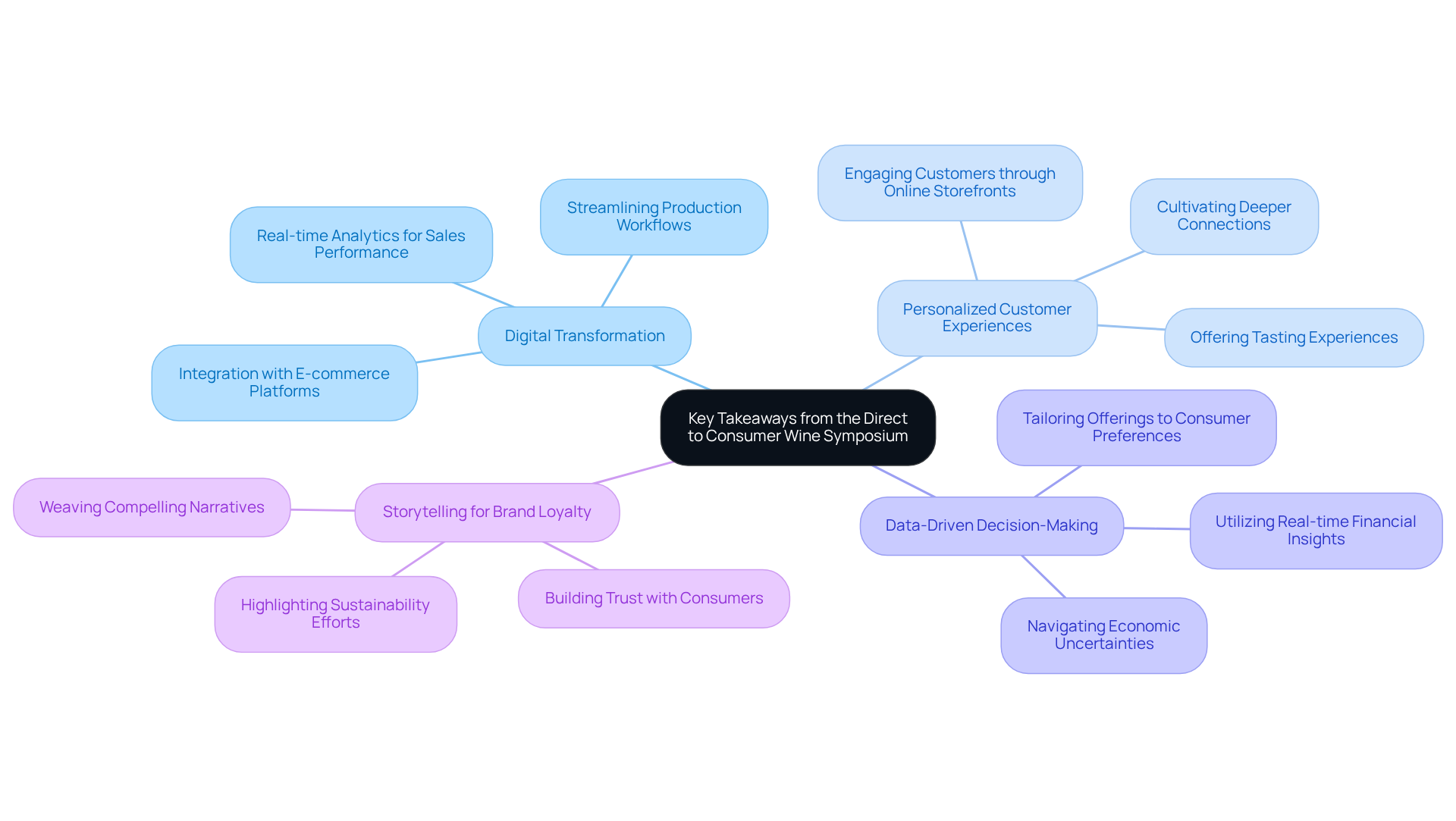
Conclusion
The insights gathered from the Direct to Consumer Wine Symposium highlight the transformative potential of digital strategies for wineries, particularly family-owned vineyards. By emphasizing personalized marketing, effective storytelling, and data-driven decision-making, these approaches are essential for fostering deeper connections with consumers and driving sustainable growth in an increasingly competitive marketplace.
Key discussions underscored the necessity of adapting to current market trends, such as the growing demand for sustainable practices and the rise of online purchasing. Wineries that invest in optimizing their e-commerce channels, enhancing customer experiences, and implementing robust retention strategies are better positioned to thrive. Furthermore, the emphasis on storytelling not only aids in building brand loyalty but also serves as a powerful tool for engaging diverse demographics, ultimately leading to increased sales and customer loyalty.
As the wine industry continues to evolve, embracing these strategies is crucial for long-term success. By focusing on personalized experiences, engaging narratives, and effective digital marketing, wineries can not only meet the changing preferences of consumers but also cultivate a loyal customer base. The insights from the symposium serve as a valuable roadmap, encouraging wineries to innovate and adapt in order to secure their future in the direct-to-consumer landscape.
Frequently Asked Questions
What is Enocap and how does it support family-owned wineries?
Enocap is a leader in developing direct-to-consumer (DTC) sales strategies that help family-owned vineyards build strong connections with their customers. It emphasizes personalized marketing and data analytics to drive sales growth and brand loyalty.
What results have vineyards experienced by adopting Enocap's strategies?
Vineyards utilizing Enocap's methodologies have reported impressive outcomes, including a 191% increase in online transactions, largely due to personalized marketing techniques that encourage repeat purchases.
Why is personalized marketing important in the beverage sector?
Personalized marketing is crucial because it enhances customer engagement, leading to increased sales. For instance, 27% of new wine club registrations come from digital channels, highlighting the effectiveness of tailored outreach to attract prospective customers.
How does brand storytelling impact direct-to-consumer wine sales?
Effective brand storytelling allows vineyards to share their unique heritage and values, fostering emotional connections with consumers. This strategy can lead to increased customer loyalty, higher sales, and more word-of-mouth referrals.
What are the financial benefits of effective customer retention strategies for wine clubs?
Increasing client retention rates by just 5% can boost profits by 25% to 95%, demonstrating the significant financial impact of effective retention strategies.
What techniques can wineries use to retain wine club members?
Wineries can enhance retention through personalized communication, exclusive member benefits, and engaging events. Methods like feedback questionnaires and customized proposals can improve the member experience.
How can storytelling be effectively utilized in vineyard marketing?
Storytelling can be enhanced by incorporating personal and authentic elements, utilizing multimedia such as videos and virtual tours, and engaging the vineyard team in sharing the narrative to ensure consistency.
What role does customer feedback play in improving wine club experiences?
Frequent feedback questionnaires help wineries understand member preferences and enhance their experiences, leading to higher retention rates and customer satisfaction.




